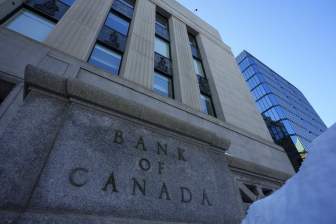The official numbers are in, and 57.73 per cent of eligible British Columbians showed up to vote in the May 2017 election, up from 55.32 per cent in 2013.

Based on population estimates, the highest voter turnout was among British Columbians aged 65 to 74, with 72 per cent of eligible voters casting a ballot. Young people continued to stay away from the polls, just 28 per cent of eligible 18 to 24-year-olds voting. Just 37 per cent of eligible 25 to 34-year-olds cast their ballots.
The figures appear in the Elections BC report for the 2017 general election that was released on Monday. Even though the province has increased voting options, turnout has not risen significantly.
“British Columbia provides voters with more voting opportunities than any other jurisdiction in Canada,” reads the report. “Elections BC conducted voting at 347 advance voting places and 1,317 general voting places. Special voting opportunities were also available in hospitals and long-term care facilities, on post-secondary campuses, and at select transportation hubs and other important sites throughout the province.”
When only registered voters are factored in, nearly seven per cent more 25-34 year olds voted in 2017 compared to the 2013 provincial election. Just 46.35 per cent of the registered voters in the age group turned out last May.
Elections BC found that more voters are casting a ballot on non-election days than ever before. Advance voting accounted for 30 per cent of votes cast, compared to 11.4 per cent in the 2005 provincial election.

Get daily National news
Voter turnout proved to be extremely critical in what was the closest modern-day election in British Columbia’s history. Of the 1,974,712 votes, 797,194 people voted for the B.C. Liberal Party while 795,527 voted for the B.C. NDP. That is a gap of just 1,667 votes across the entire province.
The result left British Columbia with an historic minority government, with the NDP governing with 41 seats, the Liberals serving in opposition with 43 seats and the Greens holding the balance of power with 3 seats.
“The election of a minority government in 2017 means my office must now maintain an ongoing state of readiness for a provincial general election, while also delivering other scheduled and on-demand events,” said Chief Electoral Officer Keith Archer in the opening pages of the report.
The close election led to incredible scrutiny, especially during the nearly two weeks between election day, May 9, and the absentee ballots being finally counted on May 14. Elections BC was criticized at the time for not starting the recounts and totaling the absentee ballots until May 12.
“A topic of particular scrutiny during this period was the 13-day period between initial count and final count established under the Election Act,” reads the report. “Elections BC is working on a proposal for a new voting model for future provincial general elections, and is considering ways in which the period between initial count and final count could be reduced or eliminated.”








Comments